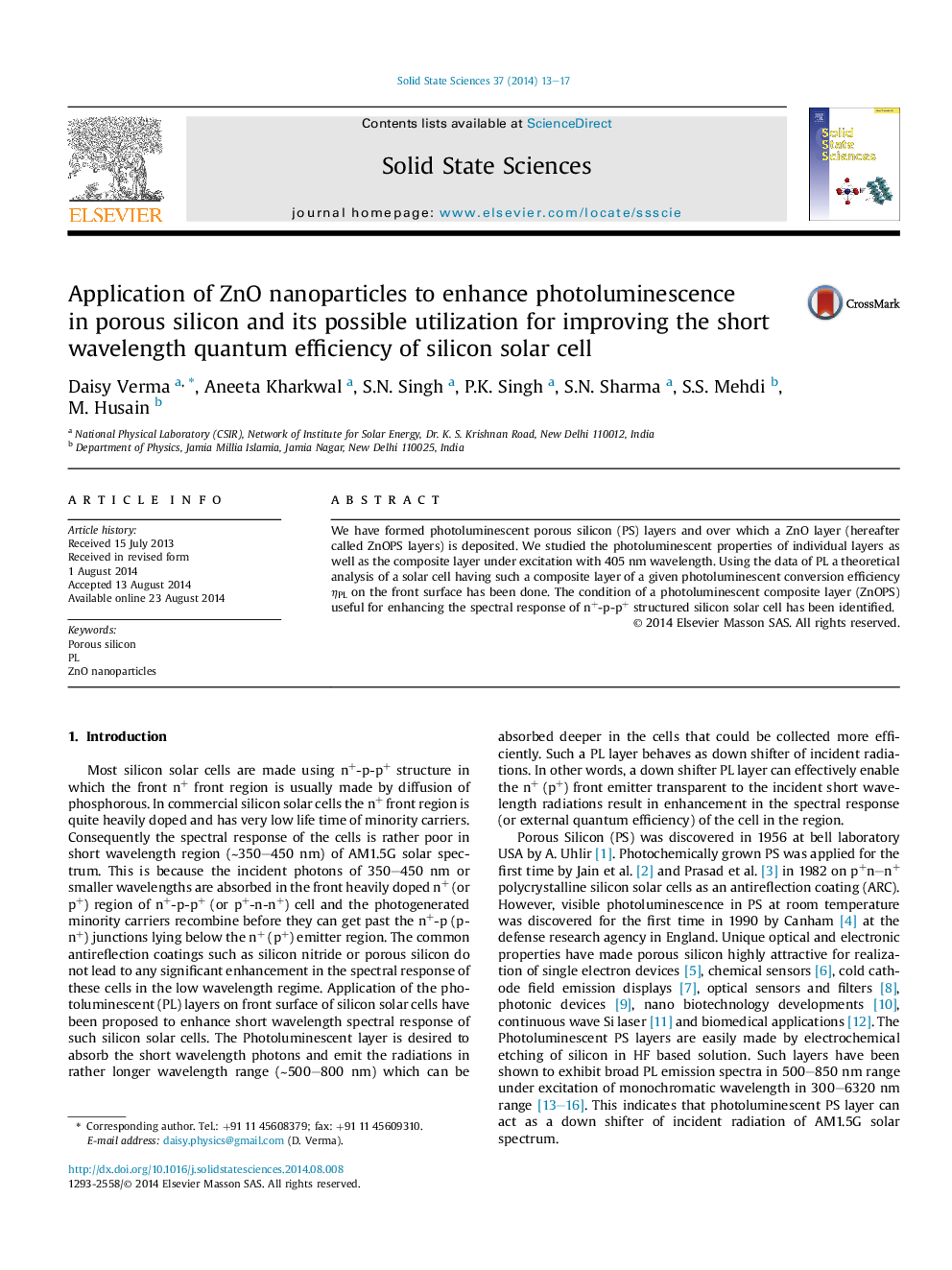| Article ID | Journal | Published Year | Pages | File Type |
|---|---|---|---|---|
| 1504348 | Solid State Sciences | 2014 | 5 Pages |
•Porous silicon (PS) show photoluminescence in 480–800 nm with 405 nm excitation.•Nano-composite layer of PS and ZnO becomes highly photoluminescent after annealed at 600 °C in air.•The nano-composite layer exhibits PL spectrum in 480–800 nm range.•ZnOPS layer having PL conversion efficiency ηPL above a certain critical value.•Improvement in short wavelength spectral response of Si solar cell is expected with efficiency enhancement.
We have formed photoluminescent porous silicon (PS) layers and over which a ZnO layer (hereafter called ZnOPS layers) is deposited. We studied the photoluminescent properties of individual layers as well as the composite layer under excitation with 405 nm wavelength. Using the data of PL a theoretical analysis of a solar cell having such a composite layer of a given photoluminescent conversion efficiency ηPL on the front surface has been done. The condition of a photoluminescent composite layer (ZnOPS) useful for enhancing the spectral response of n+-p-p+ structured silicon solar cell has been identified.
Graphical abstractSpectral response vs. wavelength.Figure optionsDownload full-size imageDownload as PowerPoint slide
